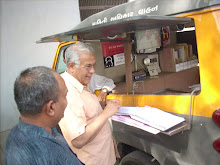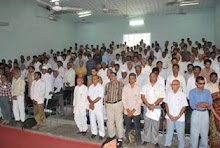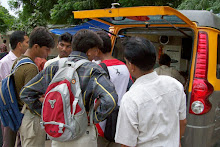Times
of India: Panaji: Tuesday, 29 December 2015.
Goa's party
scene, whether in the coastal belt down South Agonda and Palolem or the more
famous beach stretch of North Calangute, Candolim, Baga, Anjuna, or further up
Morjim and Arambol, is not bereft of drugs.
The
authorities too, accept this. But what has remained hidden or rather pushed
under the carpet is a larger issue of drug overdose (OD) cases and related
deaths.
In the last
few years even though several cases of suspected OD cases in 2015 itself, four
cases including three deaths have been reported, outspread of the problem has
been just ignored as if it is a natural consequence.
Dr Jawaharlal
Henriques, director at St Anthony's Hospital, Anjuna, which also runs a drug
rehabilitation centre, rates the problem as a very serious one. Every second
day his hospital receives at least one OD case.
Between 2008
and 2012, there must have been over 50 suspected OD cases relating to
foreigners, says a source attached to the police department. This number
excludes the local cases which mostly go unreported, except if the person
involved is a domestic tourist. Suspected OD death of a tourist though creates
a momentary furore; everything dies down after a while.
Attempts to
obtain information about OD cases under the RTI from forensic department of Goa
Medical College (GMC) and hospital, Bambolim, were not fruitful. On the first
occasion, department furnished names of all (1,180) bodies on which postmortem
was conducted in GMC between 2008 and 2012 and not just of OD victims.
Second time,
information was ostensibly declined on the ground that it cannot be shared as
police investigation was under progress, even though in majority of the cases
investigations never reached its logical conclusion.
A forensic
expert, attached to forensic department of GMC for many years, says it is
difficult to prove a case of OD if viscera are not sent for chemical analysis
on time. Ideally, it has to be sent for testing within a week's time to get the
right result. Thanks to procedural delays, he says viscera are sent most of the
times, a week or two weeks later. Not surprisingly, viscera test negative for
any kind of narcotic substance most of the time, and police are free to claim
there are no OD cases.
Two weeks
ago, Bombay high court at Goa while disposing off a petition filed by NCP chief
spokesperson, Trajano D'Mello directed the police to submit investigation
reports in two suspected OD deaths of Neha Bahuguna, Bengaluru and Isha Mantry,
Mumbai.
In 2010,
Neha, 23, died suspected of OD while she was in Goa to attend an electronic
dance music (EDM). A 28-year-old Mumbai fashion designer, Isha died in December
2014, also died during an EDM.
SP (anti
narcotic cell) (ANC), Karthik Kashyap said, in both the cases viscera reports
came negative for OD. Denying allegations, he maintains that in cases where
viscera report confirms OD due investigation is conducted.
A source says
it is a different ball game all together. It is advantage police if the case is
not registered as OD, as they don't have to go after a drug peddler or dealer
and can close the case.
Family of the
deceased, if it involves a foreign national, in all probability, does not press
for investigation. "If the cause of death is proved as OD, the family
stands to lose insurance money," said a source.
What's
alarming is, in many OD cases, and which even Dr Henriques pointed out that
affected persons had never abused drugs.
In majority
cases that he had seen, he says victim's drink was spiked with an intention to
rob or rape, or both, in case the target was a female. Currently, he is
treating two European youth who were brought to the hospital in an unconscious
state. He suspects, their drinks were mixed up with some other substance by
someone who wanted to rob them, while they were partying at a joint in
Candolim. To their luck, one of the two, on feeling uneasy decided to return to
their hotel.
In another
case, he says an air hostess who was in Goa for a holiday with her partner last
month, had a similar experience. Her drink was spiked while partying at a
popular joint in North Goa.
Most commonly
used substances to adulterate drugs are quinine, meow meow or mephedrone and
ketamine. Ketamine, an anesthetic drug was widely misused until meow meow
arrived on the scene. Though meow meow is banned, drug abuse has not been
stopped, says a doctor who has also treated a couple of OD cases.
Generally, a
drug is mixed with another substance that gels well with the original
substance. A dealer or peddler will indulge in such things to enhance his
profit. "It's a done thing," says a drug addict, who manages to get
his regular fix from a peddler in Calangute. Sometimes, he himself uses the
trick when short on money. "You can mix anything from chalk power to
Crocin tablet powder. Domestic tourists never suspect," he talks of his
conquest with tourists. Nevertheless, he rues the fact that it is difficult to
get pure drugs.














































































